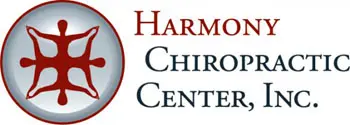Greater Trochanteric Pain Syndrome (GTPS) is a condition that affects the muscles and tendons around the hip. It can cause pain, swelling and tenderness in the area near your hip bone, known as the greater trochanter. GTPS is most common in women between 40-60 years of age but can occur at any age due to various causes such as trauma or overuse. While there are treatments available to help manage symptoms, it’s important to understand what Greater Trochanteric Pain Syndrome is and how it’s caused so you can find an effective treatment plan for yourself or a loved one who may be suffering from this condition.
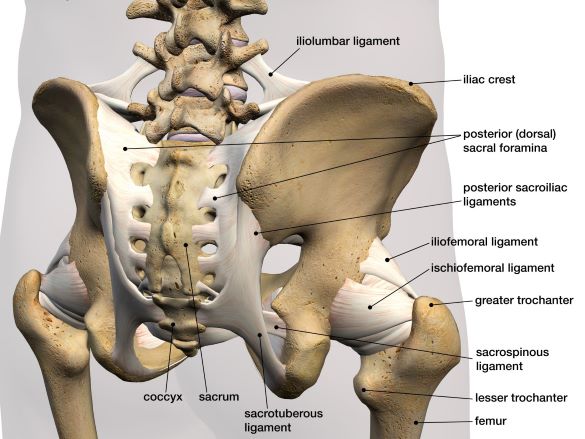
What is Greater Trochanteric Pain Syndrome?
Greater Trochanteric Pain Syndrome (GTPS) is a condition that affects the muscles and tendons around the hip. The greater trochanter is a bony prominence located on the outside of your upper thigh, just below your hip joint, and it is often the widest point of one’s hips. It Is the attachment point of two muscles, the iliotibial band and the gluteus medius, as well as the tendon that connects these muscles to bone. When these muscles become strained or overused, they can cause pain and tenderness in the area of the greater trochanter.
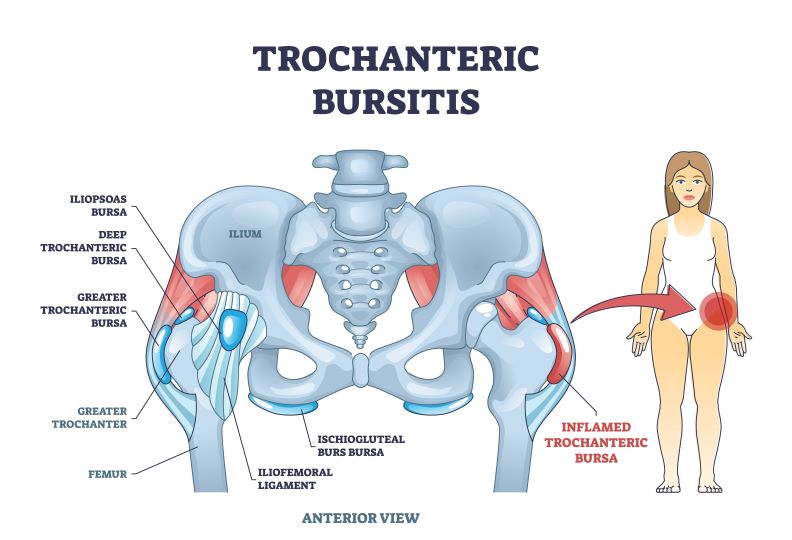
Symptoms of Greater Trochanteric Pain Syndrome
Greater Trochanteric Pain Syndrome can cause a variety of symptoms, the most common of which is pain in the area near your hip bone. This pain can range from mild to severe and may be accompanied by swelling and tenderness. Other symptoms may include difficulty standing or walking, an inability to put weight on one leg or difficulty sleeping due to the pain. In some cases, Greater Trochanteric Pain Syndrome may also cause a snapping or clicking sound when the hip is moved.
Causes and Risk Factors for Greater Trochanteric Pain Syndrome
Greater Trochanteric Pain Syndrome (GTPS) can be caused by a variety of factors, including trauma or overuse. Traumatic injuries, such as falls or car accidents, can cause Greater Trochanteric Pain Syndrome due to the direct trauma causing damage to the muscles and tendons around the hip. Overuse is another common cause of Greater Trochanteric Pain Syndrome and is seen in athletes or people who perform repetitive hip motions. Other risk factors such as age, obesity and poor posture can increase your chances of developing Greater Trochanteric Pain Syndrome. Females are more likely to develop GTPS than males. Certain medical conditions like low back pain, scoliosis, significant leg length discrepancy, foot problems (like Achilles tendinitis, plantar fasciitis, or bunions) and arthritis anywhere in the lower extremity can also be risk factors for developing GTPS.

Diagnosis of Greater Trochanteric Pain Syndrome
Greater Trochanteric Pain Syndrome (GTPS) is usually diagnosed through physical examination and medical history. During the physical exam, your doctor will evaluate your range of motion in the hip joint and check for any tenderness or swelling. They may also ask about any recent injuries that could have caused Greater Trochanteric Pain Syndrome. In some cases, imaging tests such as X-rays or MRIs may be used to rule out other conditions and help confirm the diagnosis. Your doctor may also order laboratory tests to check for infection or inflammation that could be causing Greater Trochanteric Pain Syndrome.
Treatment Options for GTPS
There are a variety of treatment options available for GTPS. The most common treatments involve managing the pain with rest, physical therapy and medications such as nonsteroidal anti-inflammatory drugs (NSAIDs) or corticosteroid injections. Rest is essential in allowing the body to heal and it may be necessary to limit physical activity until the Greater Trochanteric Pain Syndrome is under control. Physical therapy can help strengthen the muscles around the hip and reduce strain, while medications can help relieve pain and inflammation. Rarely, surgery may be recommended to repair any damaged tissues or correct underlying issues that are causing Greater Trochanteric Pain Syndrome.
Graston Technique is an innovative treatment option for Greater Trochanteric Pain Syndrome (GTPS). It is a form of manual therapy that involves therapists using specialized stainless-steel instruments to identify, treat and reduce soft tissue restrictions. This technique helps to increase circulation in the affected area, break down adhesions and scar tissue, and restore normal movement and function. Graston Technique is safe, relatively non-invasive and has been proven to be effective in treating Greater Trochanteric Pain Syndrome.
Cupping therapy is an effective treatment option for Greater Trochanteric Pain Syndrome (GTPS). This type of therapy involves bringing fresh blood and nutrients to the affected area by creating a vacuum-like suction in a glass cup that has been placed on the skin. Cupping therapy helps reduce inflammation, improve circulation and promote relaxation. It also helps to relieve pain, improve range of motion and restore function. Cupping therapy is safe, relatively non-invasive and may be used in conjunction with other treatment options for Greater Trochanteric Pain Syndrome.
Cold laser therapy is a promising treatment option for Greater Trochanteric Pain Syndrome (GTPS). This type of therapy involves using low-level lasers to stimulate the cells in the affected area. The laser light helps to reduce inflammation, decrease pain and improve circulation. Cold laser therapy also helps increase collagen production, which can help strengthen the muscles
Corrective exercises can be an effective way to treat Greater Trochanteric Pain Syndrome (GTPS). These exercises focus on strengthening the muscles around the hip and improving posture, as well as restoring normal range of motion in the joint. They are designed to reduce pain, improve flexibility and help prevent future injury or flare-ups. Corrective exercises may involve stretching, strengthening and balance activities that target specific areas affected by Greater Trochanteric Pain Syndrome. With regular practice, they can help alleviate existing symptoms while also preventing new ones from appearing. Kinesio taping is another option that can provide relief of hip pain.
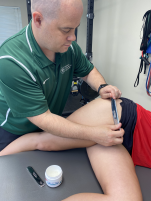
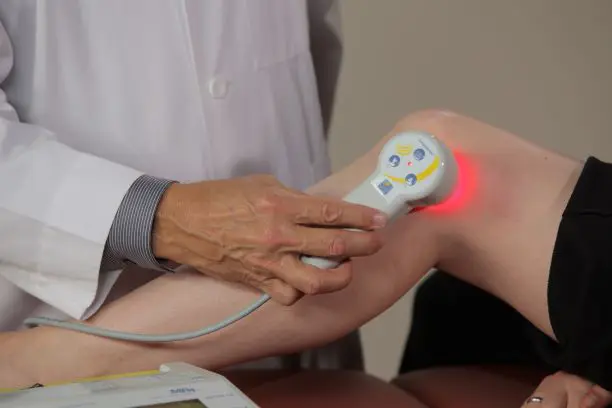
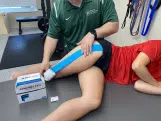
Prevention Tips to Reduce the Risk
Prevention is key when it comes to Greater Trochanteric Pain Syndrome (GTPS). To reduce the risk of getting Greater Trochanteric Pain Syndrome, it’s important to maintain a healthy lifestyle. Exercising regularly can help strengthen the muscles around your hip joint and prevent injury. Low-impact activities such as walking, swimming, and stretching can help reduce the risk of Greater Trochanteric Pain Syndrome. Additionally, it’s important to stay active while being mindful of your posture and body mechanics. It’s also essential to wear supportive shoes with good arch support to distribute weight evenly across your feet. Losing weight can help reduce your risk of developing it. Lastly, adopting proper lifting techniques can help reduce the risk of Greater Trochanteric Pain Syndrome. By following these prevention tips, you can reduce the risk of Greater Trochanteric Pain Syndrome and keep your hips healthy.
